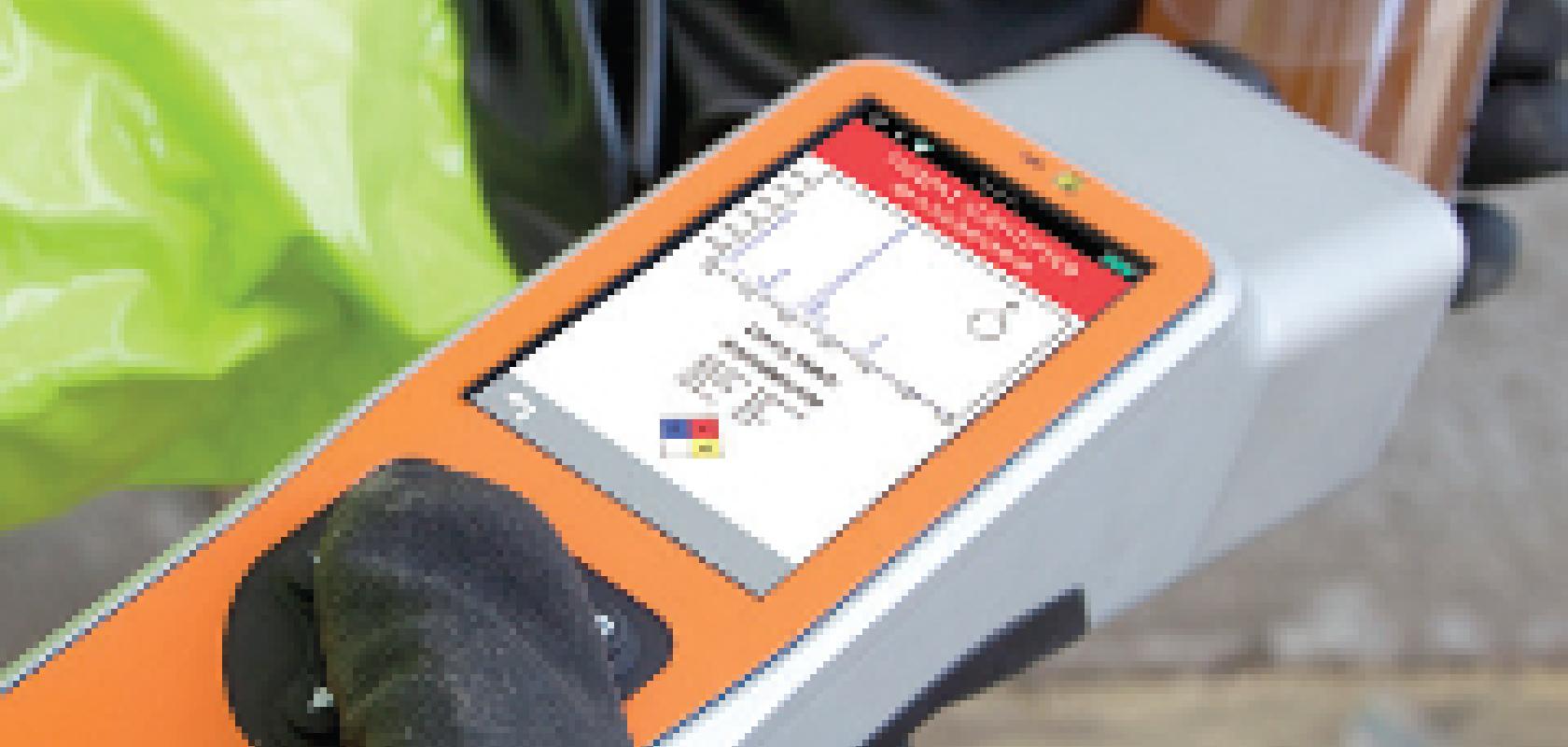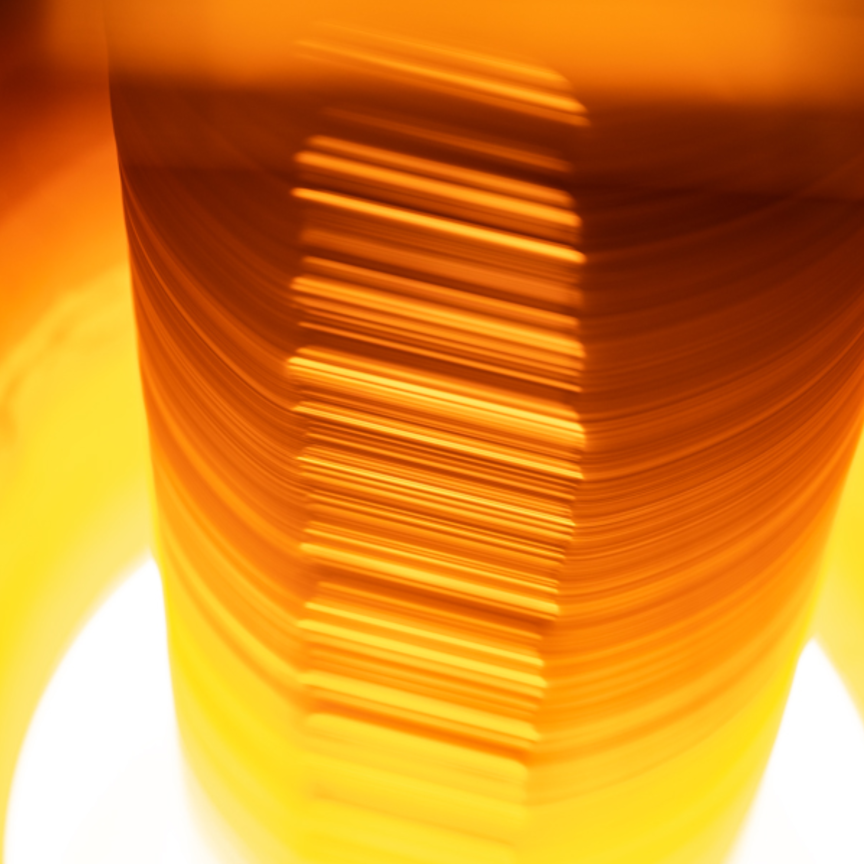Commercial sensing solutions for detecting explosive materials are available, but as yet none that offer any significant standoff distance between the operator and the threat. In terms of scanning a package to determine whether or not it contains explosives, the further away this can be done the better.
At SPIE DSS, the defence, sensing and security show to be held in Baltimore in the US in April, a number of groups will present work on developing Raman sensing for explosives detection, where operating at a reasonable standoff distance is the ultimate goal. There are other techniques for explosives detection out there, but Raman sensing is one of the main ones because of its specificity.
‘Whether Raman is a promising technique for standoff detection is yet to be determined,’ commented Dr Paul Pellegrino, branch chief of the Quantum, Optics and Photonics branch at the US Army Research Lab. ‘It has been pushed in the last few years. The benefit of Raman is that it provides a lot of information; the downside is that it has weak signal strength, which makes it difficult to get further range.’
In terms of the commercial systems available, Rigaku Raman Technologies is among a few companies offering handheld Raman analysers. The company is presenting at SPIE DSS on work into detecting homemade explosives, something that Eric Roy, a product manager at Rigaku Raman Technologies, noted is particularly challenging. ‘You’re not dealing with a pure substance necessarily [with homemade explosives],’ he said. ‘There can be a lot of contamination and unreacted materials from the ingredients that can complicate the detection process.’
The company’s Progeny ResQ handheld Raman analyser works at 1,064nm to obtain a Raman spectrum by positioning the device a few millimetres away from the sample. It is non contact analysis, which is a plus, although the operator has to be basically on top of the sample. The big advantage of Raman imaging though, noted Roy, is that materials within containers, depending on what the container is made from, can be analysed without needing to open the bottle or bag.
Ease of use is particularly important, according to Roy, for handheld Raman analysers designed for explosives detection. ‘The big thing that instrument manufacturers are doing now is making these devices very simple to use, which is especially important for users in very stressful situations – the user can’t have a complicated interface in these scenarios. Providing more useful information to the end user is something else that’s going to be critical in the future, because, particularly with homemade explosives, the threat is always evolving. We’re asking people to take a piece of equipment and go into a hot zone, so we want to make sure we provide them with the tools that they need to be safe.’
Standoff detection
Acquiring a usable signal a few millimetres away from the sample and achieving this at a number of metres range are two different problems. ‘As far as standoff Raman explosives detection systems, there are no systems being used in the field at the moment,’ noted Dr Ellen Holthoff at the Quantum, Optics and Photonics branch of the US Army Research Lab.
The group at the US Army Research Lab will present their work at SPIE DSS on developing standard techniques for determining the effectiveness of a Raman sensing setup. The team deposited known quantities of ammonium nitrate onto various substrates, including cloth, hair, plastics and metals, and measured the Raman response.
‘The work presented at SPIE DSS and some of the past work has really been to create better standards for use in the detection community which is trying to detect explosives,’ explained Pellegrino. ‘You have to be very careful about how you create these standards. You’ve got to get it right so that you don’t indiscriminately throw away a technique that may have value because you don’t know your own standard well enough, especially in the optical regime.’
The National Institute of Standards and Technology (NIST) in America has developed standards for other techniques like ion-mobility spectrometry, but, Pellegrino noted, the optical techniques used for range detection of explosives are very sensitive to the state of the explosives. He gave the example of observing a shift in the ammonium nitrate Raman spectra when it’s in different polymorphic phases. Surface enhanced Raman scattering (SERS), he said, was the only way to get that information easily.
‘There is therefore the potential to mistakenly assume that a certain Raman technique isn’t very good without having a strong handle on the standards,’ Pellegrino continued. ‘This work suggests that Raman is sensitive to the phase of the samples, so scientists need to think through that when creating a new Raman technique – you have to be aware that you could have this weakness in the technique that, depending on the disposition of the material in the real world, you could have an issue. You might have to build very robust libraries, for instance, to handle certain situations that wouldn’t occur in the lab.’
Raman is also sensitive to what substrate the ammonium nitrate is deposited on, noted Mikella Farrell, a co-author on the paper at the US Army Research Lab. ‘The gold SERS active surfaces were where the most polymorphs were detected, whereas it was harder to even detect the material on human hair using spontaneous Raman,’ she said.
Building UV sources
Lately, ultraviolet Raman as a spontaneous Raman technique has shown itself to be advantageous for detecting explosives. A group at the West Virginia High Technology Consortium Foundation (WVHTCF) will present work on a continuous wave deep ultraviolet (DUV) source for resonance Raman explosive sensing at SPIE DSS.
The advantages to detecting in the DUV are, according to Balakishore Yellampalle at WVHTCF and a co-author on the SPIE DSS paper, that many explosives have absorptive resonances in the DUV region, so exciting with DUV light can enhance the signature by several orders of magnitude. Also, the Raman cross-section is naturally higher in that region because of wavelength-dependent enhancements, and the DUV doesn’t have any fluorescence or background noise from sunlight.
The group at WVHTCF has built a laboratory prototype and is working on a more compact system that they plan to take outside to make standoff measurements. The laboratory system is able to detect explosives at standoff distances of up to 15 metres, although Yellampalle emphasised that the experiments were done in the lab, which is different to working outdoors.
The team is working at wavelengths between 220nm and 260nm. The difficulty with implementing a DUV system is that there aren’t many suitable DUV lasers available, noted Yellampalle. ‘The most common laser operating in the deep ultraviolet region is an intra-cavity frequency doubled argon-ion laser, which is typically heavy and only produces a few milliwatts of optical power,’ he said. ‘These lasers are therefore not suitable for engineering portable systems or for use in standoff detection of explosives. You can’t take these argon-ion setups outside the lab.’
An alternative is frequency doubled q-switched pulsed lasers, but these lasers can degrade the explosive sample due to high peak power, according to Yellampalle.
The WVHTCF group is building its own DUV lasers based on second harmonic generation of blue laser sources. The technique uses external resonant enhancement, which is not new, but the group has come up with a novel way of implementing the resonant enhancement cavity that makes the device compact and stable.
‘All the measurements so far have been in the laboratory. We have measured so far around 15 different bulk explosives and we’re able to detect them from distances of 4 metres,’ commented Yellampalle. ‘We made a few trace samples by mixing explosives with liquids and then drying the liquid out, and we were able to measure less than 50µg of explosive traces from 1-2 metre distances. This is with the first system we built, which is still at a very low laser power output of 250µW. We expect the new system to have more power and we expect we will be able to detect trace quantities from much longer distances.
‘Our interest is detecting explosives from a standoff distance of between 1 and 15 metres. We want to be able to detect from a reasonably far enough distance to keep the operator out of harm’s way,’ he added.
The system for detecting explosives out of the laboratory will have filters to block the sunlight, filters like McPherson’s compact double-monochromator Model 275D, which the company states, is ideal for deployment in Raman sensors operating in the UV. The device works as a tuneable filter and is effective at wavelengths as short as 190nm with no special preparation.
But it is the UV source that is the main bottleneck for developing portable devices for standoff Raman sensing. ‘In order to build a portable system, one of the key objectives is to make the lasers small and powerful enough that they can detect explosives from far enough away. We also want the lasers to be very stable and robust enough to operate outside the laboratory,’ commented Yellampalle.
The Raman road ahead
‘There are not many standard techniques for detecting explosives from a distance,’ stated Yellampalle. ‘In the solid phase, explosives are harder to detect from a standoff distance. There are also infrared-based absorption spectroscopy and terahertz spectroscopy – those techniques do not carry the same kind of information as a Raman sensor. Raman has a very clear advantage for standoff detection of explosives.’
Infrared reflectometry is also a promising area for explosive material detection, although it is a difficult technique, according to Pellegrino. He said: ‘We study the optical techniques, because we want range and distance between the operator and the hazard. The range is dependent on the type and amount of material you’re measuring. It scales from metres to hundreds of metres depending on the material.’
The group at the US Army Research Lab is also developing coherent anti-Stokes Raman spectroscopy (CARS) for detecting explosives, which, according to Pellegrino, has the potential for orders of magnitude higher signal strength. ‘CARS is much more difficult to embody, but it is the road ahead for standoff explosive detection,’ he stated.
 Greg Blackman is the editor for Electro Optics, Imaging & Machine Vision Europe, and Laser Systems Europe.
Greg Blackman is the editor for Electro Optics, Imaging & Machine Vision Europe, and Laser Systems Europe.
You can contact him at greg.blackman@europascience.com or on +44 (0) 1223 275 472.
Find us on Twitter at @ElectroOptics, @IMVEurope, and @LaserSystemsMag.


